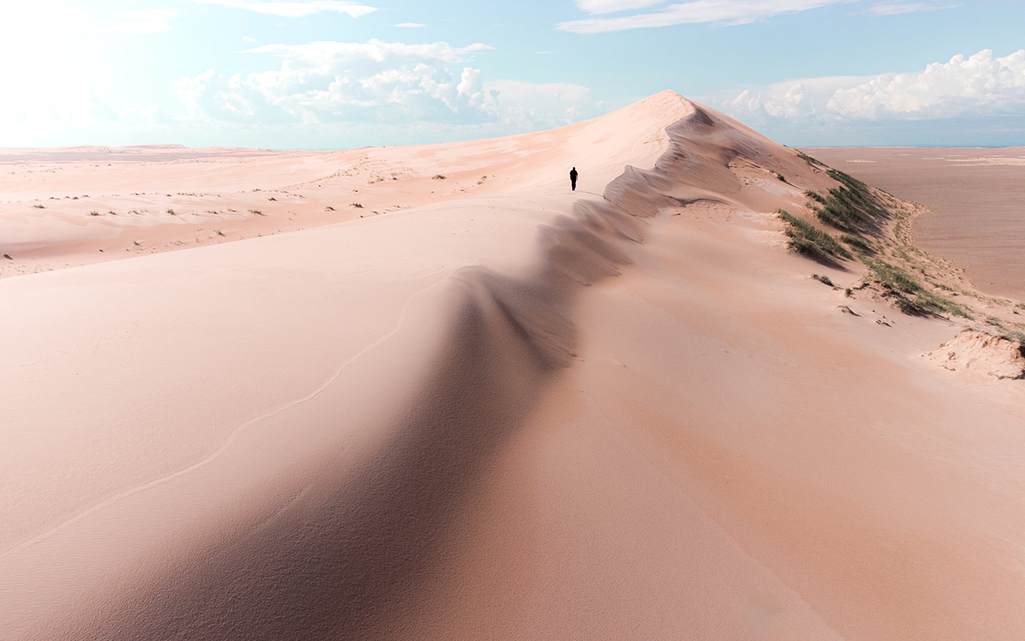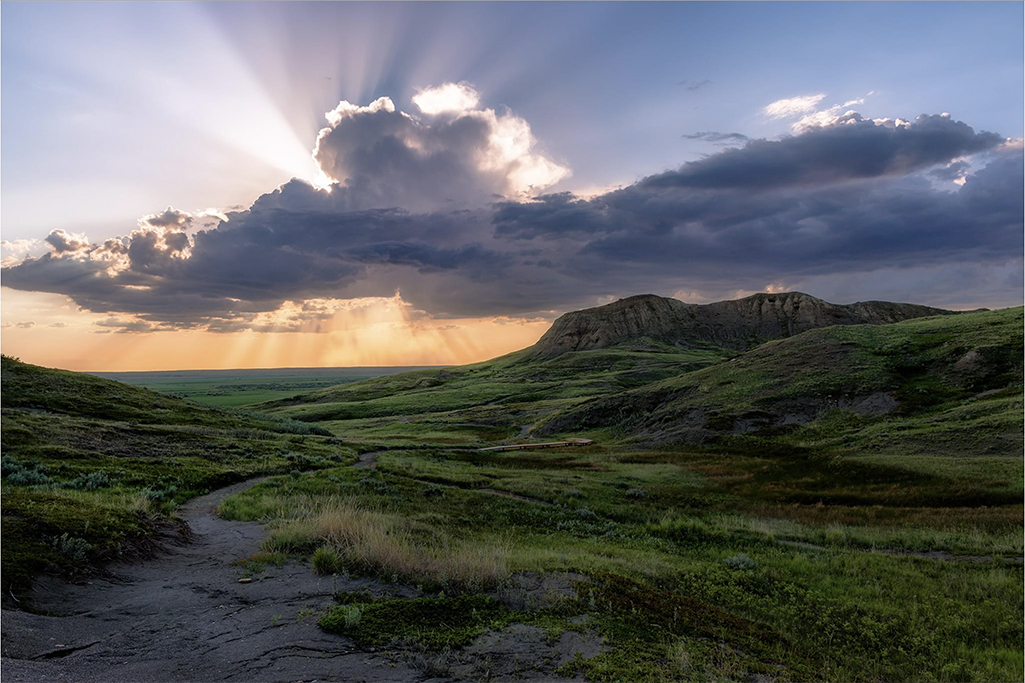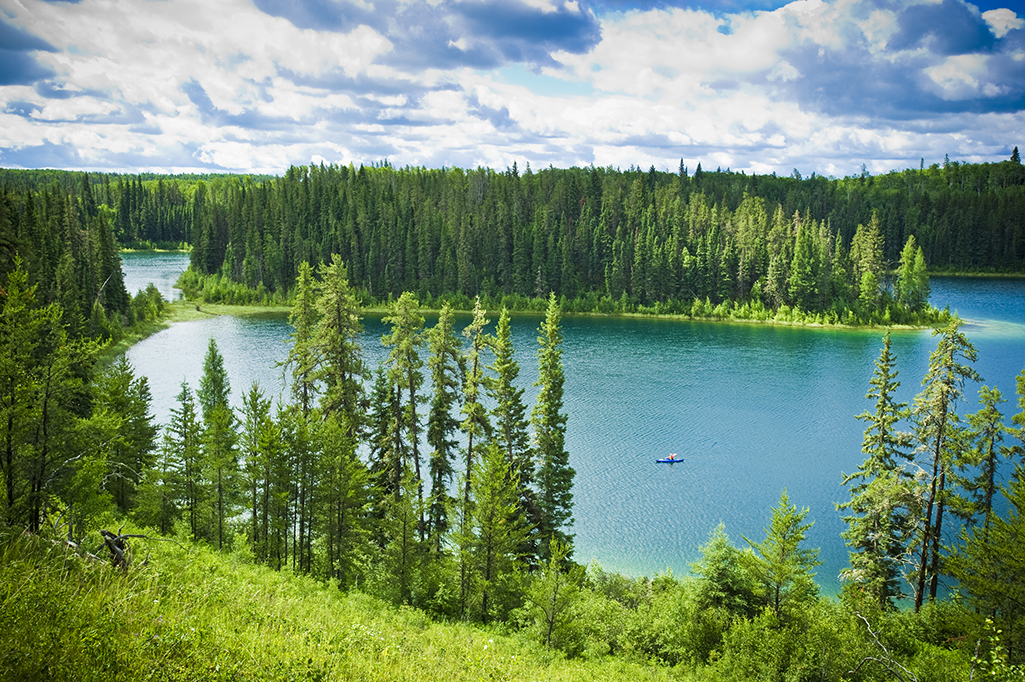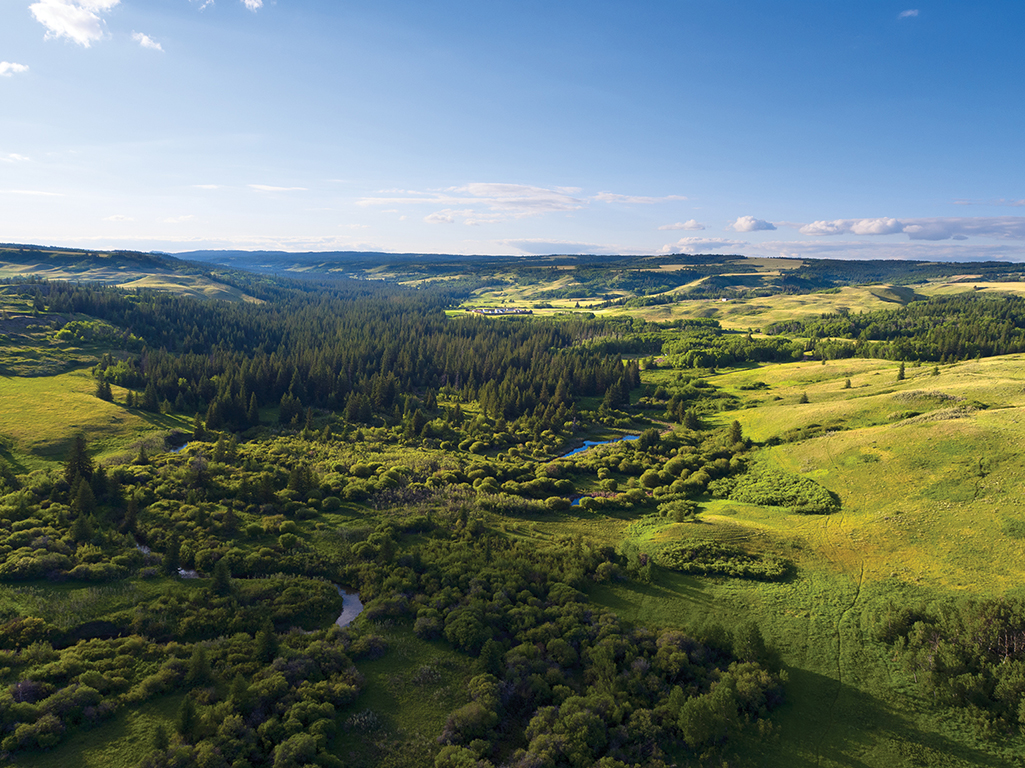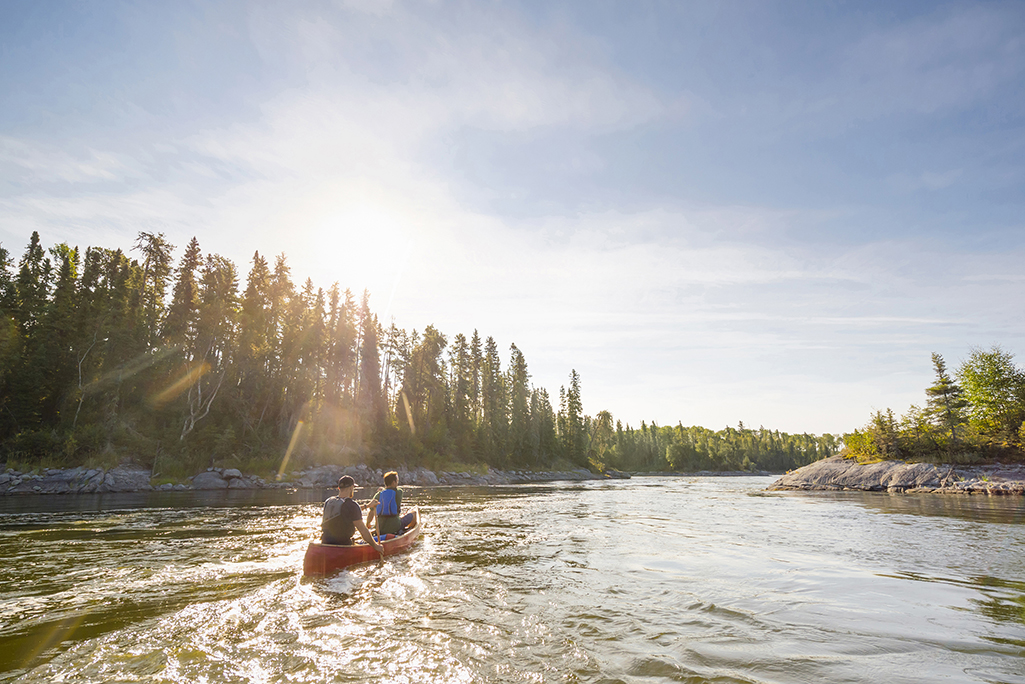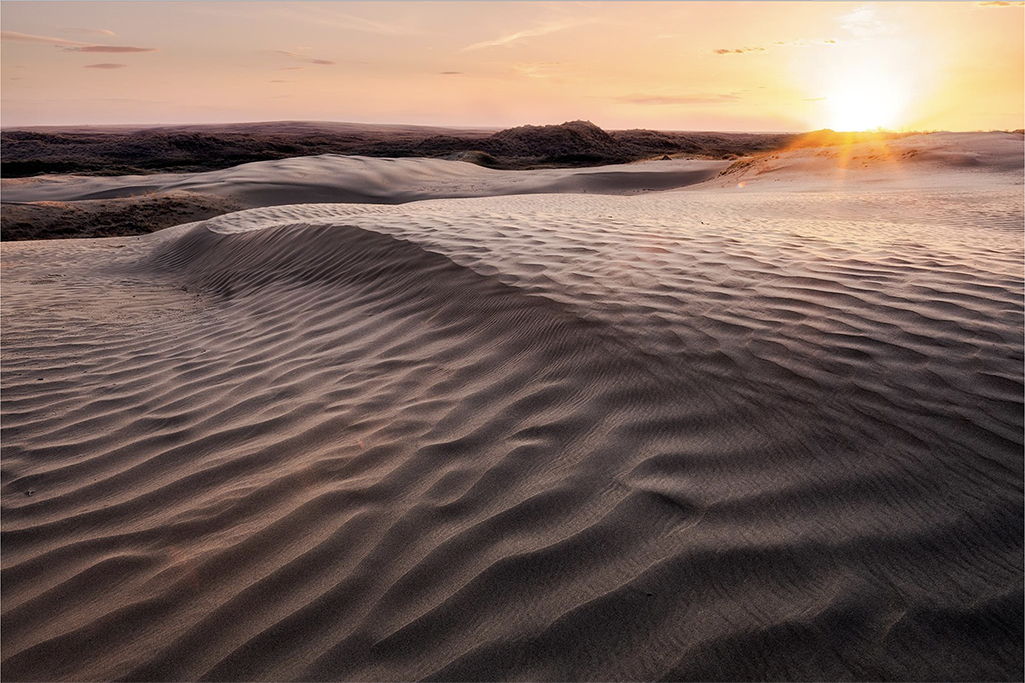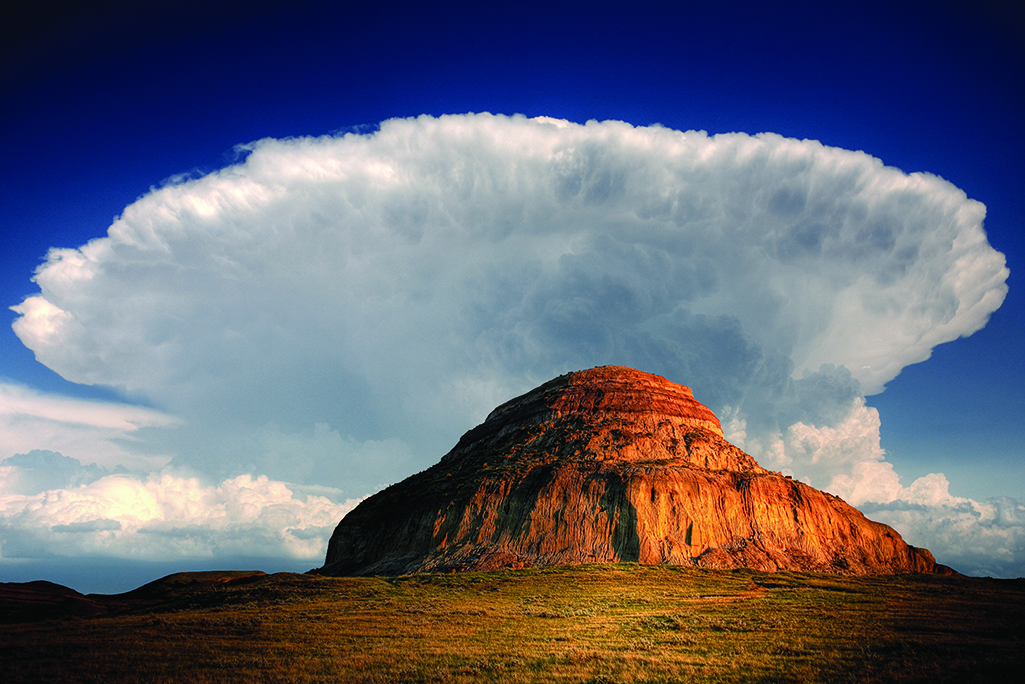Discover Saskatchewan's Natural Attractions
Saskatchewan has a varied landscape – the north is covered by forest and crystal-clear lakes and the south is made up of golden fields, grasslands, rolling hills and badlands. Appreciate Saskatchewan in all of its glory as you discover the natural attractions that make this province so unique and beautiful.
*Please note that some of Saskatchewan’s natural wonders are located in protected provincial or national parks, on private land or in ecologically fragile environments. When accessing these areas, be respectful and obey all posted signs, close gates, park in designated areas and pack out what you pack in. As visitors, we are all responsible for conserving these natural attractions.
Grasslands National Park
One of Saskatchewan’s two national parks, Grasslands National Park is a 570-sq. km expanse of grassy hills and river valleys. In the West Block, take the Ecotour Scenic Drive and view Plains bison as they roam the land, grazing on native grasses. Black-tailed prairie dogs, pronghorns and various species of snakes make their home here. Backcountry hikers and campers will have a field day in the East Block. Backpack your way through the gorgeous, hoodoo-strewn landscape of the Valley of 1,000 Devils or take a drive on the 11-km Badlands Parkway. This new paved route has six scenic viewpoints highlighting some of Saskatchewan’s most spectacular vistas. Experience the quiet of the park and fascinating night sky with a stay in an oTENTik (in the West Block and East Block). Look up to see how the Milky Way illuminates this designated Dark Sky Preserve.
Gem Lakes
Known for their dazzling reflections of emerald, jade and aquamarine, the Gem Lakes are a cluster of deep, sand-bottomed lakes in Narrow Hills Provincial Park. The lakes are a haven for brook, rainbow and brown trout. Exotic hybrids, such as splake and tiger trout, also roam these waters. A 5.5-km interpretive hiking trail winds around the outer edge of the lakes, along shorelines and climbs to open wooded ridges where the vantage points are spectacular.
Cypress Hills
The Cypress Hills are an unexpected mountain-like oasis on the border between Saskatchewan and Alberta that reach an elevation of 1,392 m above sea level, marking the province’s highest geographical point. The area has a mix of landscapes – towering hills, lush lodgepole pine and white spruce forests, and fescue prairie and wildflowers – that provide breathtaking views. Take a driving tour to some of Cypress Hill Interprovincial Park’s most scenic spots, including Bald Butte and Lookout Point in the Centre Block. In the West Block, experience a Saskatchewan sunset from the Conglomerate Cliffs.
Churchill River
There are countless canoe routes in northern Saskatchewan, many of which have been used since before the fur trade. Paddle through distinct ecoregions that exhibit unique terrain, flora and fauna, past boiling rapids and ancient pictographs. In Lac La Ronge Provincial Park, dip your oar into the Churchill River. Tranquil lakes, roaring falls and a sense of serenity are the allure of the North. Along this river’s route is Nistowiak Falls, one of the province’s most beautiful and highest waterfalls with a drop of 24 m.
Great Sandhills
Located north of Trans-Canada Highway 1 near the village of Sceptre, the Great Sandhills rise five storeys above the prairie landscape. The rolling sand dunes cover more than 1,900 sq. km. Mule deer and sharp-tailed grouse live among the native prairie trees, shrubs and grasses in this unique region.
Big Muddy Badlands/Castle Butte
The Big Muddy Badlands in the southwest are sprawling, intricate hills, valleys and caves that once served as a place of refuge for Chief Sitting Bull, and later as a hideout for outlaws such as Sam Kelly. A relic of the Ice Age, Castle Butte rises 60 m above the surrounding landscape. It’s a striking formation that served as a landmark for Indigenous people and members of the North West Mounted Police. Access to Castle Butte is only available from June 1 to November 1.
Athabasca Sand Dunes
In the remote north, Saskatchewan’s largest lake is home to Athabasca Sand Dunes Provincial Park. These billowing sands stretch for 100 km along the south shore of Lake Athabasca and are the world’s most northerly dunes. Aside from the striking view, this protected park is home to a fragile and unique ecosystem rich in rare and endemic (only found here) plants. The area is accessible by floatplane only and recommended for experienced wilderness users, as there are no onsite services. Guided tours by licensed outfitters are available.
